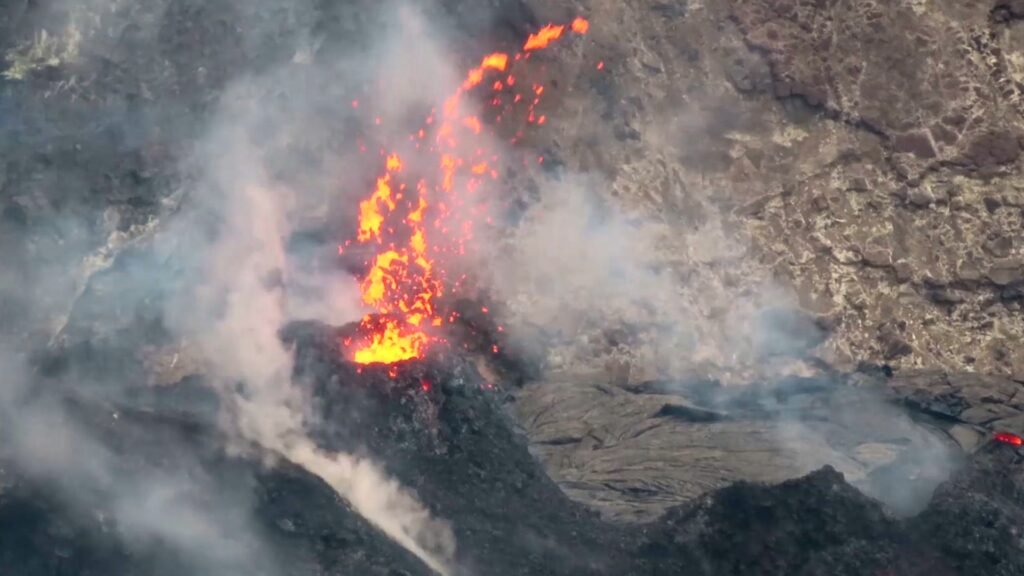The Volcanic Landscape of the United States
An Overview of Active Volcanoes in the U.S.
In the vast expanse of the United States, there exists a remarkable volcanic landscape. There are 169 active volcanoes, with concentrations in Alaska, Hawaii, and the Pacific Northwest. Not all are on the verge of eruption, as active volcanoes can slumber for 10,000 years or more. However, scientists believe some may stir soon. Based on the 2018 National Volcanic Threat Assessment update by the U.S. Geological Survey, 18 volcanoes are ranked as “very high” threats, considering their eruptive history, recent activity, and proximity to people. These 18 volcanoes hold the potential to cause significant problems when they eventually erupt.
Kilauea: The Ever – Active Hawaiian Volcano
Kilauea’s Frequent Eruptions and Impact
Kilauea, located on the southeastern part of the Big Island of Hawaii, is the most active among the five volcanoes that form the island. Since 1952, it has erupted 34 times. The eruption from 1983 to 2018 lasted nearly three decades. For much of this period, its slow – moving lava was relatively harmless, even creating spectacular scenery as it expanded the island. However, in 1990, it sent lava through new vents with little warning, destroying much of the town of Kalapana. In 2018, it again showed its potential danger when new eruptive vents opened near Pahoa, spewing lava and dangerous sulfur gas into residential areas. Dozens of buildings were destroyed, and over 1,700 people had to evacuate.

Mount St. Helens: A Reminder of Volcanic Fury
The Devastating 1980 Eruption and Aftermath
One of the most catastrophic volcanic eruptions in U.S. history occurred on May 18, 1980, near Portland, Oregon. An earthquake triggered a landslide and a massive blast at Mount St. Helens, sending a tower of ash 30,000 feet high and knocking down trees across 230 square miles. Subsequent eruptions sent avalanches of hot ash, rocks, and gas down the slopes at high speeds. This disaster claimed more than 50 lives and thousands of animals, with damages exceeding $1 billion. In 2004, the volcano reawakened, and although it has calmed down, it remains an “active and dangerous” volcano.
Mount Rainier: A Looming Threat to Urban Areas
The Dangers of Ice – Laden Volcanic Eruptions
As the highest peak in the Cascade Range and laden with the most glacier ice among contiguous U.S. mountains, Mount Rainier poses a significant threat to the Seattle – Tacoma area. When it erupts, as demonstrated by the 1980 Mount St. Helens eruption, volcanoes with ice can create lahars. Mount Rainier had two lahars reach Puget Sound around 5,600 years ago. It last erupted in the 1840s, with larger eruptions in the past 1,000 and 2,300 years. Despite being currently dormant, it is one of the most closely monitored volcanoes in the country due to its potential volatility and proximity to large cities.

























![[Cultivating Independence] The Rise of Domestic Lithium-Ion Battery Supply Chains in the U.S.](https://evergreenvitality.com/wp-content/uploads/2024/12/ev-battery-robots-factory-istock-1456466947-360x180.jpg)













![[Cultivating Independence] The Rise of Domestic Lithium-Ion Battery Supply Chains in the U.S.](https://evergreenvitality.com/wp-content/uploads/2024/12/ev-battery-robots-factory-istock-1456466947-120x86.jpg)


